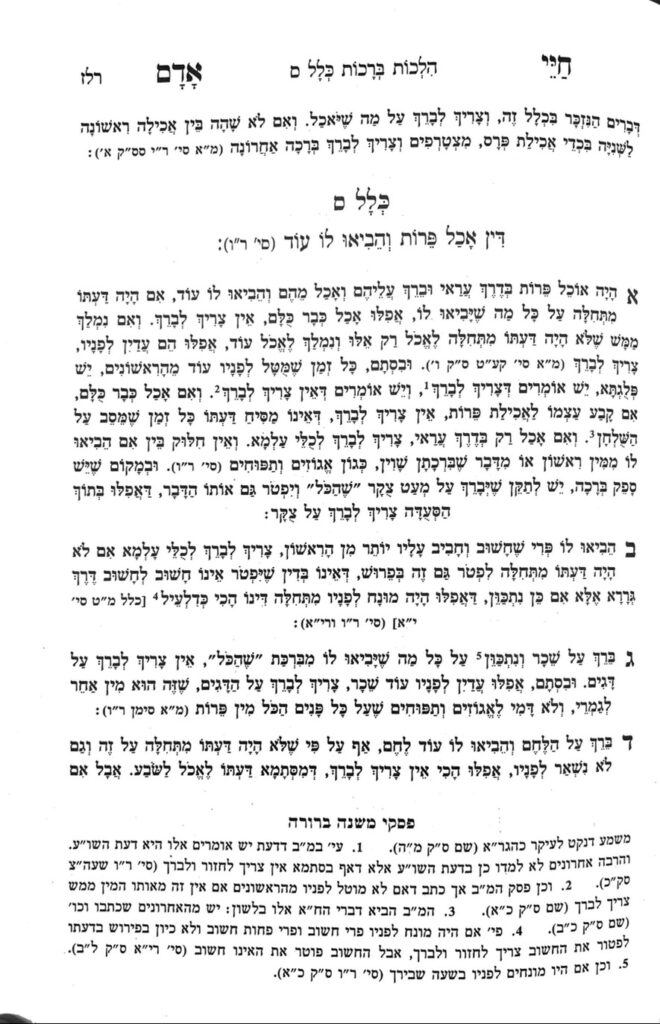We have finished Klal 59, but we need to clarify one point. In shiur 1141, we learned that, m’ikar hadin (according to the letter of the law) a shinui makom can be effected even when one moves m’cheder l’cheder, between rooms of a house. However, we also learned that the Mishnah Berurah brought an opinion that shinui makom does not apply between cheder le’cheder, and one could move between rooms without making a new bracha. We need to clarify that the reason behind this opinion is not due to the concept of stam daas (inclusion by default; that one automatically includes all the rooms of their house in mind when they wish to eat). Rather, it is because of a machlokes rishonim whether the Gemara which discusses shinui makom applies between rooms within a house, or only between houses.
There is a second sevara, independent of this machlokes rishonim, that if one has active daas to include the other rooms of their house as part of their makom, they may do so and not require a new bracha. Based on this concept, we suggested that there may be a stam daas to automatically include all rooms within one’s house.
However, there is a fundamental difference between these two sevaros. The second sevara is applicable when one is at home or a similar place where it is normal to multitask while eating a meal, and therefore can expect to move between rooms. Thus, there is a stam daas that they may leave the room in which they are eating for various tasks. When one is elsewhere, such as at a wedding or as a shabbos guest, there is not necessarily stam daas to include other rooms, because it is not necessarily normal that one would go into other rooms in these situations. Thus, these rooms would not be included without deliberate daas.
In the latter situations, if one is eating something which requires a bracha achrona in its original makom (i.e., hamotzi or mezonos [besides rice]), one anyways does not lose their k’vius when they leave the room (see shiur 1154). We could still discuss whether one is allowed lechatchilla to effect such a shinui makom, and, as we learned previously (shiur 1156), one is allowed to do so for a short amount of time only.
If one is eating something which does not require a bracha achrona in its original makom, they lose their bracha rishona if they leave that makom. It is in such a case the Mishnah Berurah paskens that bedieved, a person would not lose their bracha, because, according to one of the sevaros mentioned above, one never loses their bracha rishona when moving m’cheder l’cheder. However, since according to the other sevara, one would lose their bracha rishona (without active or stam daas), the Mishnah Berurah writes one should not move m’cheder l’cheder to avoid this machlokes.
Summary
- If one is eating something which requires a bracha achrona in its original makom (i.e., hamotzi or mezonos [besides rice]), one does not lose their k’vius when they leave the room, and may leave lechatchilla for a short amount of time.
- If one is eating something which does not require a bracha achrona in its original makom, lechatchilla they should not leave the room, unless the second room was included through active daas or stam daas at the time of the bracha.



